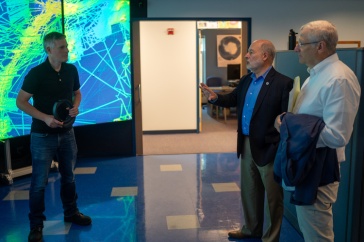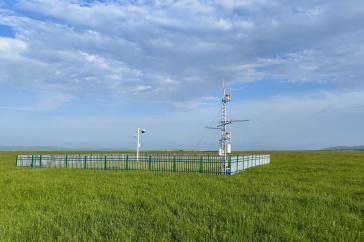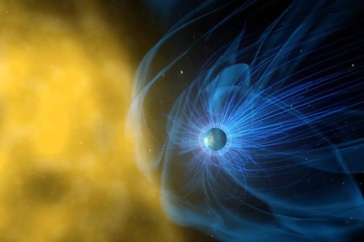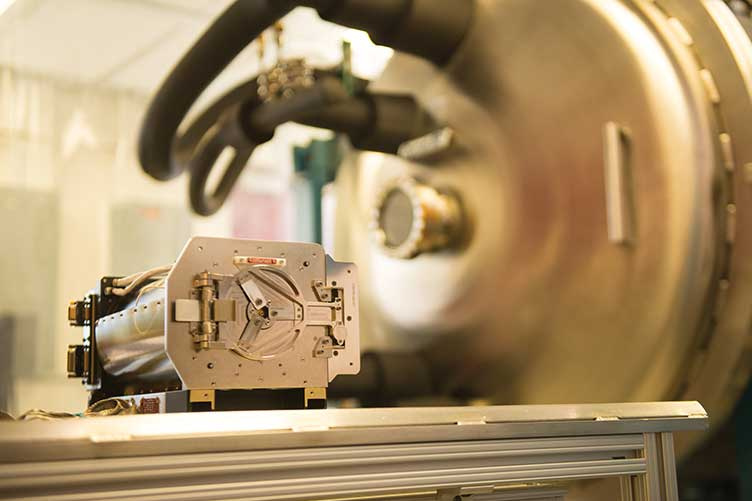

A NASA rocket carrying instruments developed by scientists, engineers and students from UNH’s Space Science Center (SSC) has obtained the first-ever data of an elusive phenomenon, providing never-before-seen views of what powers giant explosions like solar flares and other space weather.
Last October, the four satellites of NASA’s Magnetospheric Multiscale (MMS) mission flew through a magnetic reconnection event between Earth and the sun — in simplest terms, a splicing of the different magnetic field lines that exist at the edge of the earth’s magnetic boundary. While the MMS satellites were only inside the event for a few seconds, the instruments that UNH researchers helped develop were able to gather data on the plasmas and fields involved, yielding information that SSC director Roy Torbert says is “so revolutionary, I think we’ll be mining it for the next 50 years.”
Magnetic reconnection is one of the most important drivers of space weather events like solar flares, coronal mass ejections and geomagnetic storms. It can affect modern technological systems like communications satellites, GPS navigation and electrical power grids — as well as the safety of astronauts in space. Scientists expect that understanding how these explosions work will help predict when they might occur and better protect the technologies modern society relies upon.
Torbert led the UNH team that constructed or coordinated nearly half the key instruments on each of the four MMS satellites, and co-authored the paper on the newly released data, published online in May in the journal Science. He says the MMS mission, which launched March 12, 2015, was designed from the outset to provide an answer to the riddle of magnetic reconnection. “We were confident that we would be able to get some important data from the mission, but to do it as quickly and accurately as we did was just amazing.”
Torbert says the power and clarity of data from MMS caps nearly a decade of UNH dedication to the $70 million project. “The longstanding, world-class expertise of the UNH Space Science Center in space instrumentation was critical to forming our excellent international team on MMS, which contributed directly to the findings of this exciting mission thus far,” he says.
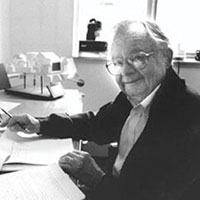

Space research at UNH dates back to at least 1952, when professor John Lockwood set up neutron monitors — the first in the northeast — in Durham and on top of Mt. Washington. This year marks the 60th anniversary of the formalization of UNH’s space research into the UNH Space Science Center, as well as the 25th anniversary of the university’s recognition as a space grant university, just two years after the 1989 formation of the National Space Grant and Fellowship Program.
Originally published in UNH Magazine Fall 2016 Issue
-
Written By:
Beth Potier | UNH Marketing | beth.potier@unh.edu | 2-1566



















































